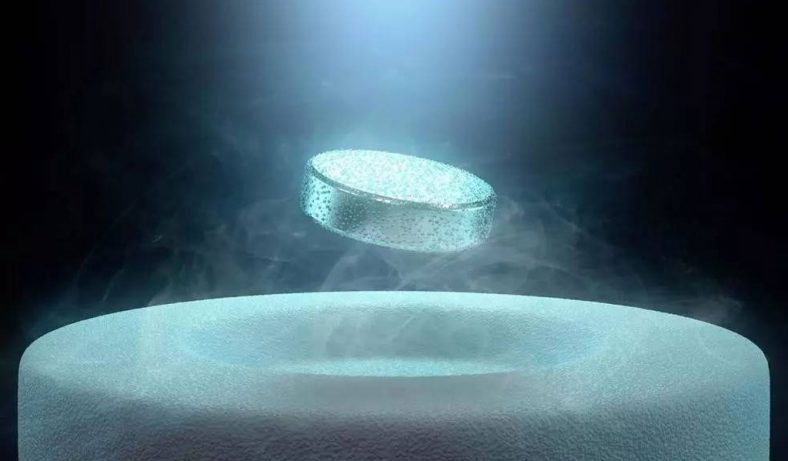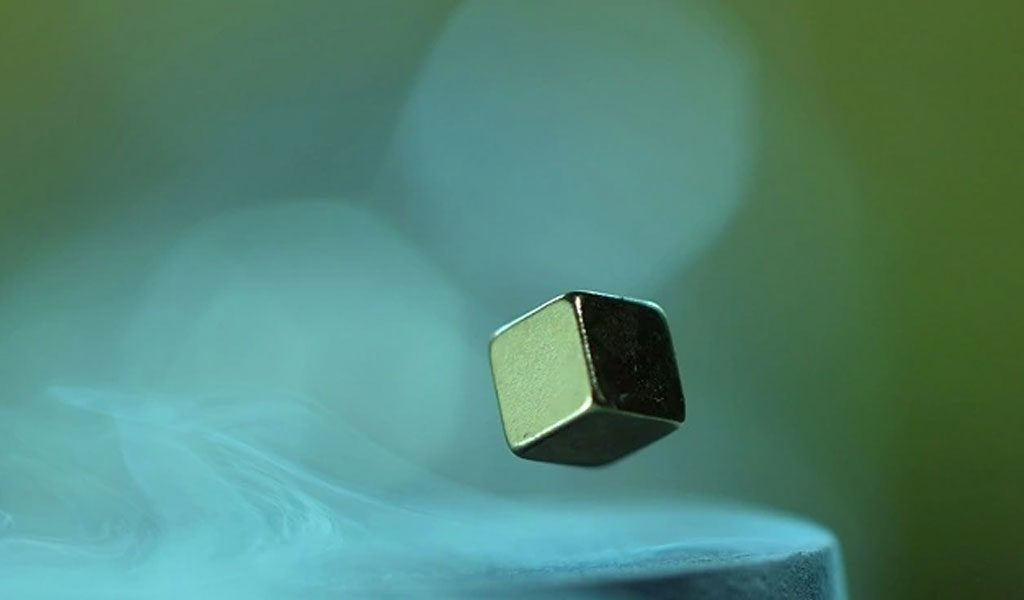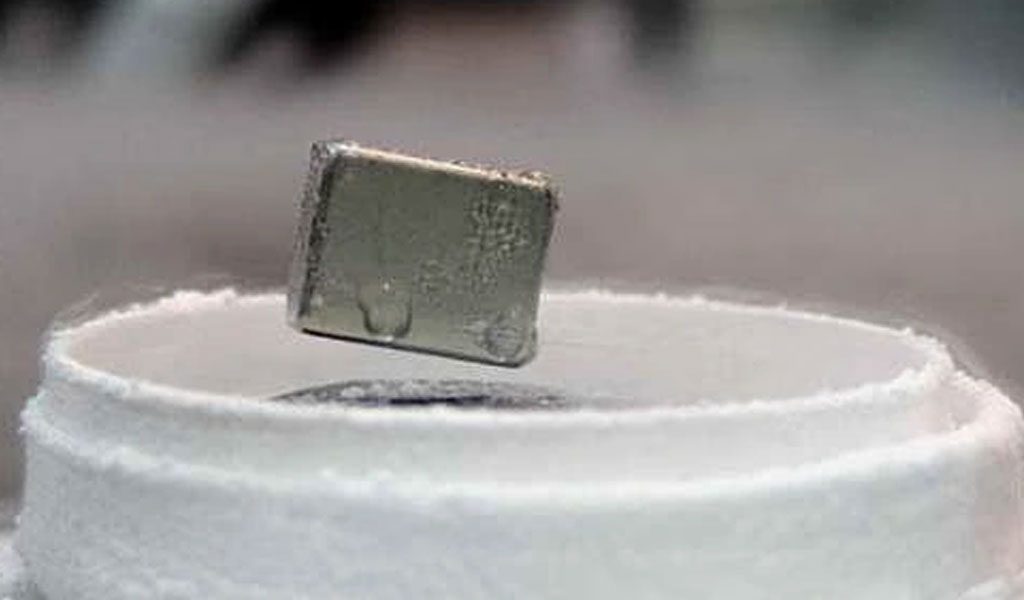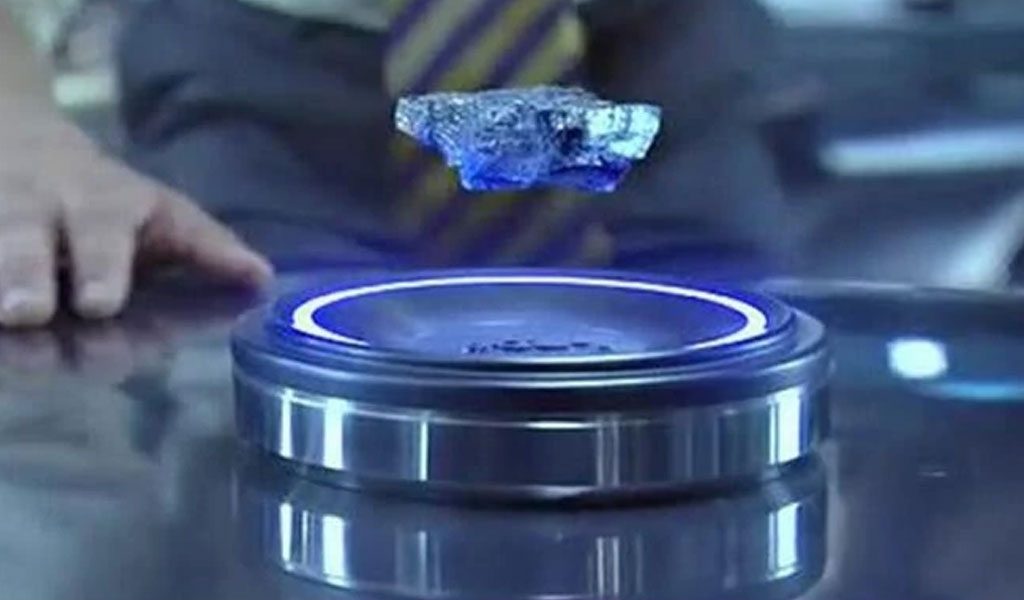
In the realm of materials science, few discoveries have captivated the imagination and potential for innovation as much as superconductors. These remarkable substances exhibit the enigmatic property of superconductivity, allowing them to conduct electricity without any resistance. The concept of superconductivity was first realized in 1911 when Dutch physicist Heike Kamerlingh Onnes successfully cooled mercury to a critical temperature, demonstrating the vanishing of electrical resistance. Since then, the study of superconductors has advanced dramatically, leading to revolutionary applications across various industries, from energy transmission and medical imaging to quantum computing and transportation.
This article aims to take an in-depth journey into the world of superconductors, exploring their fundamental principles, the mechanisms governing their behavior, the different types of superconductors, and the diverse array of applications that have arisen due to this phenomenon. Additionally, we will examine the challenges and limitations faced by superconductors, ongoing research, and the bright future that lies ahead for this extraordinary class of materials.
View our more material guides:
Defining Superconductivity – What Is Superconductor
The Phenomenon of Superconductivity
Superconductivity is a striking and unique property observed in certain materials when they are cooled below a critical temperature. At this critical point, the material undergoes a phase transition, resulting in a complete absence of electrical resistance. Consequently, electrical currents can flow through the superconducting material indefinitely, without any loss of energy. This phenomenon defies classical physics and is governed by the principles of quantum mechanics.
The Historical Milestones
The journey of superconductivity began with Heike Kamerlingh Onnes’ pioneering experiment on mercury, leading to the first-ever observation of superconductivity. This groundbreaking discovery opened doors for further exploration and laid the foundation for future research.
Understanding Room Superconductor
Room-temperature superconductors refer to a class of materials that exhibit superconductivity at temperatures higher than the extremely low temperatures typically required for conventional superconductors.
Traditional superconductors require temperatures close to absolute zero (around -273.15°C or -459.67°F) to achieve superconductivity, which is the phenomenon of zero electrical resistance and the expulsion of magnetic fields from the material.

Conventional superconductors, though highly efficient when cooled to their critical temperature, require expensive and energy-intensive cryogenic cooling systems to maintain those low temperatures. If room-temperature superconductors were realized, it could lead to a wide range of practical applications with more accessible and cost-effective superconducting technologies, including energy transmission, power generation, transportation, and high-performance computing, such as quantum computing.

What Is Room Superconductor
Room-temperature superconductors are also called room-temperature superconductors. In fact, regardless of high temperature, room temperature or low temperature, as long as the various particles in the compound are kept in a stable state as much as possible, and the spin directions (of the various particles) are consistent, the spin speeds are consistent. In this way, the electrons to be transmitted can have a more stable and forward direction (such as “flow direction & convergence direction” in the terminology of airflow). The transmission environment can be close to the concept of room temperature superconductors.
During the transmission process, it will not be disturbed by the collision of the anti-spin particles, nor will it be decelerated by the forward but slower-spin particles
In 2013, Andrea Cavalleri at the Max Planck Institute in Germany, in collaboration with an international team, discovered that when YBCO is illuminated by an infrared laser pulse, for a fraction of a second, it temporarily stays at room temperature. become a superconductor. The laser significantly altered the coupling between the bilayers in this crystal. However, the exact mechanism was unclear at the time.
The Development Of Room Superconductor
Thermal power plants can be built anywhere, but green power plants that use renewable energy must be carefully selected, because strong winds are found on plateaus, and sunshine can be enjoyed in deserts. Therefore, we are facing a transition to green energy. One of the biggest challenges is how to transmit electricity from these remote places to cities across distances of hundreds of kilometers. State-of-the-art superconducting cables can transmit electrical energy for thousands of kilometers with only a few percent loss. But the trouble is that the cable must always be immersed in liquid nitrogen at 77K (about -196°C). Therefore, if such a cable is to be erected, pumps and cooling equipment must be installed every one kilometer or so, which greatly increases the cost and complexity of the superconducting cable solution.

Superconductors that can work at normal temperature and pressure will make the dream of global power supply come true. The sun in Africa’s Sahara desert could also power Western Europe through superconducting cables running across the bottom of the Mediterranean Sea. However, the secret to making room-temperature superconductors remains a mystery to this day, just like in 1986, when researchers first prepared a substance that could achieve superconductivity in relatively “high temperature” liquid nitrogen (previously Superconductors need to be cooled below 23K).
In 2008, a large class of new superconductors (iron-based superconductors) based on iron elements were discovered. The hope that theoreticians can find the working mechanism of high-temperature superconductors has also been greatly increased (see “Global Science” No. 8, 2009, “The Leap of High-Temperature Superconducting “Iron””). If this mechanism is mastered, room-temperature superconductors may no longer be out of reach. Unfortunately, progress is still slow.
In July 2023, a team of scientists in South Korea stated that they discovered the world’s first room temperature superconducting material, a material called “modified lead apatite crystal structure”. On July 31, Hyun-Tak Kim, the third author of the team’s second paper “Superconductor Pb10-xCux(PO4)6O exhibits suspension phenomenon and its mechanism at room temperature and pressure”, and a professor of physics at the College of William and Mary in the United States Responding to a request for comment from a reporter from the Daily Economic News, he said that his team had previously discovered an error in the paper, which has now been revised. On Tuesday, the revised paper will be republished on arXiv. In addition, the LK-99 room temperature superconducting material produced by his team may be replicated within a month, and its members will also guide the production method of LK-99, and disclose the production method of LK-99 in the article. It is to accept the doubts of all parties.
The Mechanisms Behind Superconductivity
Superconductivity is a fascinating phenomenon in which certain materials can conduct electricity with zero electrical resistance when cooled below a critical temperature. This behavior is accompanied by the expulsion of magnetic fields, a property known as the Meissner effect. The mechanisms behind superconductivity are explained by two main theories: the BCS theory (Bardeen-Cooper-Schrieffer) and the Ginzburg-Landau theory.
Cooper Pairs and the BCS Theory
In 1957, John Bardeen, Leon Cooper, and John Robert Schrieffer developed the Bardeen-Cooper-Schrieffer (BCS) theory to explain the mechanism behind superconductivity. The BCS theory describes how electrons form pairs, known as Cooper pairs, due to lattice vibrations, which are quantized as phonons. These electron pairs have lower energy states, leading to the elimination of electrical resistance and allowing the continuous flow of electric current.
The Role of Lattice Structure
The crystal lattice structure of superconducting materials plays a crucial role in facilitating the formation of Cooper pairs. Understanding this interaction has been fundamental in the development of various superconducting materials.
Classification of Superconductors
Superconductors can be classified based on several criteria, including their critical temperature, response to magnetic fields, and the underlying mechanisms governing their behavior. Here are the main classifications of superconductors:
Low-Temperature Superconductors (LTS) – What Is Low-Temperature Superconductor
A low-temperature superconductor (LTS) is a type of superconducting material that exhibits superconductivity at extremely low temperatures, typically near or below the boiling point of liquid helium (around 4.2 Kelvin or -268.95 degrees Celsius). These materials were among the first superconductors to be discovered and studied.
In a low-temperature superconductor, the phenomenon of superconductivity arises due to the formation of Cooper pairs, which are pairs of electrons that interact via lattice vibrations (phonons) in the crystal lattice structure of the material. This interaction leads to the electrons overcoming their mutual repulsion and forming bound pairs with a net zero spin. These Cooper pairs then condense into a collective quantum state, allowing electrical currents to flow without any resistance.
Low-temperature superconductors are often elemental materials or simple alloys. Some of the common low-temperature superconductors include:
- Mercury (Hg): The first superconductor ever discovered by Heike Kamerlingh Onnes in 1911.
- Lead (Pb): Another elemental superconductor, widely studied for its properties.
- Niobium-Titanium (NbTi) Alloys: An important type of superconducting material used in various applications, including superconducting magnets.
- Niobium-Tin (Nb3Sn) Alloys: Another important type of superconducting material with high critical magnetic fields.
Low-temperature superconductors have a wide range of applications, particularly in situations where low operating temperatures can be achieved and maintained. However, they also face certain limitations due to the high cooling costs associated with their operation, which can make them less practical for certain applications compared to high-temperature superconductors (HTS). Despite these challenges, low-temperature superconductors continue to be essential in research and various technological advancements, particularly in fields like superconducting magnets, high-energy physics, and some specialized medical applications.
High-Temperature Superconductors (HTS) – What Is High Temperature Superconductor
A high-temperature superconductor (HTS) is a type of superconducting material that exhibits superconductivity at significantly higher temperatures compared to low-temperature superconductors (LTS). While “high temperature” is a relative term in the context of superconductors, HTS materials have critical temperatures that can be above the boiling point of liquid nitrogen (77 Kelvin or -196 degrees Celsius).
The discovery of high-temperature superconductors in 1986 was a groundbreaking moment in the field of superconductivity. Prior to this discovery, superconductivity was primarily observed in elemental materials and simple alloys, which required extremely low temperatures near absolute zero for their superconducting state. The high-temperature superconductors opened up new possibilities for practical applications due to the relatively more accessible cooling conditions, as liquid nitrogen can be used as a coolant instead of much costlier liquid helium.
High-temperature superconductors are typically complex compounds, often containing copper oxide layers, and they do not fit neatly into the conventional Bardeen-Cooper-Schrieffer (BCS) theory that explains superconductivity in most low-temperature superconductors. Instead, their superconductivity is attributed to different mechanisms, and they are often considered unconventional superconductors.
Some of the well-known classes of high-temperature superconductors include:
- Cuprates: Cuprate high-temperature superconductors, like Yttrium Barium Copper Oxide (YBCO) and Bismuth Strontium Calcium Copper Oxide (BSCCO), have copper-oxide layers in their crystal structure.
- Iron-Based Superconductors: These compounds contain iron as a key component and have shown superconductivity at higher temperatures.
High-temperature superconductors have found various practical applications in fields such as power transmission, medical imaging (MRI), magnetic levitation (Maglev) trains, and energy storage. They continue to be a subject of intense research as scientists seek to understand their underlying mechanisms and discover new high-temperature superconducting materials with even higher critical temperatures and improved performance characteristics. The quest for higher critical temperatures in superconductors remains a central focus in the field, as it would significantly expand their potential applications and revolutionize numerous technologies.
What Is Unconventional Superconductors
Unconventional superconductors are a class of superconducting materials that do not conform to the conventional Bardeen-Cooper-Schrieffer (BCS) theory, which explains superconductivity in most low-temperature superconductors. Unlike conventional superconductors, where electron-phonon interactions are primarily responsible for the formation of Cooper pairs, the superconducting behavior in unconventional superconductors arises from other mechanisms. These mechanisms can include electron-electron interactions, magnetic fluctuations, and other exotic quantum phenomena.
Unconventional superconductors exhibit several distinct characteristics that set them apart from conventional ones:
- Higher Critical Temperatures: Many unconventional superconductors have critical temperatures (Tc) significantly higher than those of conventional superconductors. Some unconventional superconductors can even exhibit superconductivity at temperatures above the boiling point of liquid nitrogen (77 Kelvin or -196 degrees Celsius).
- Anisotropic Order Parameter: In conventional superconductors, the order parameter, which describes the symmetry of the superconducting state, is isotropic (having the same value in all directions). In contrast, unconventional superconductors often have an anisotropic order parameter, meaning it varies with direction.
- Strong Electron-Electron Interactions: In unconventional superconductors, electron-electron interactions play a crucial role in the pairing of electrons, whereas conventional superconductors rely more heavily on electron-phonon interactions.
Examples of Unconventional Superconductors:
- Cuprate Superconductors: The high-temperature superconductors belonging to the cuprate family, such as Yttrium Barium Copper Oxide (YBCO) and Bismuth Strontium Calcium Copper Oxide (BSCCO), are among the most well-known unconventional superconductors. Their superconducting properties arise from complex electronic interactions within their copper-oxide layers.
- Iron-Based Superconductors: These superconductors contain iron as a primary component and have garnered significant interest due to their high critical temperatures and complex electronic structures.
- Heavy-Fermion Superconductors: Heavy-fermion superconductors are unconventional materials that exhibit extremely large effective masses for their electrons. They display unique electronic behavior arising from strong electron-electron interactions.
Unconventional superconductors continue to be an area of active research and exploration. Understanding their underlying mechanisms and properties is essential for developing new materials with higher critical temperatures and better performance characteristics. These materials hold great promise for a wide range of technological applications, including more efficient power transmission, advanced computing, and enhanced medical diagnostics.
The Quantum World of Superconductors
Type I and Type II Superconductors
Superconductors can be classified into two main categories: Type I and Type II, based on their behavior in the presence of an external magnetic field. Type I superconductors exhibit a sharp transition to the superconducting state and expel all magnetic flux, while Type II superconductors can tolerate small amounts of magnetic flux and exhibit a mixed-state regime.
Meissner Effect
The Meissner effect is a fundamental property of superconductors, wherein they expel magnetic fields from their interior when cooled below the critical temperature. This phenomenon leads to levitation and has paved the way for innovative applications like magnetic levitation (Maglev) trains and superconducting magnetic energy storage (SMES) systems.
Applications of Superconductors – What Are Superconductors Used For
Power Transmission and Generation Superconductors offer tremendous potential in revolutionizing power transmission and generation systems. They can carry electricity over long distances without significant losses, enhancing the efficiency and reliability of energy grids.
Magnetic Resonance Imaging (MRI) Machines
One of the most widespread applications of superconductors is in medical imaging. Magnetic Resonance Imaging (MRI) machines employ superconducting magnets to generate high-intensity magnetic fields for detailed and non-invasive imaging, enhancing medical diagnostics and treatment.
Magnetic Levitation (Maglev)
Trains Maglev trains utilize superconducting magnets to achieve frictionless movement, resulting in higher speeds and reduced energy consumption. These trains are a glimpse of the future of transportation.
Superconducting Quantum Devices
Superconducting qubits play a critical role in quantum computing, offering the potential for exponentially faster calculations and solving complex problems currently beyond the capabilities of classical computers.
Particle Accelerators
Superconducting magnets in particle accelerators facilitate the study of fundamental particles, pushing the boundaries of our understanding of the universe.
Challenges and Limitations
High Cooling Costs
One of the significant challenges in using superconductors lies in the need for cryogenic cooling systems to achieve and maintain their low operating temperatures, which can be costly and energy-intensive.
Flux Pinning and Engineering Challenges
In Type II superconductors, the phenomenon of flux pinning can hinder the flow of current in certain applications, leading to potential limitations in practical uses. Engineers are continuously working to mitigate these challenges and improve the performance of superconducting materials.
Current Research and Future Prospects
New Superconducting Materials
Continued research focuses on discovering new superconducting materials with even higher critical temperatures, enabling practical applications at more accessible and cost-effective cooling conditions.
Fault-Current Limiters
Superconducting fault-current limiters have the potential to protect power grids from disruptions caused by faults, improving the overall stability and reliability of electrical networks.
Quantum Computing Advancements
Quantum computing using superconducting qubits is an active area of research, and further progress in this field could lead to transformative breakthroughs in computation and data processing.
Fusion Energy and Superconductors
Superconductors play a crucial role in the development of nuclear fusion technologies, which hold promise as a clean and virtually limitless energy source for the future.
What Was The First Superconductor
The first superconductor ever discovered was elemental mercury (Hg). Dutch physicist Heike Kamerlingh Onnes made this groundbreaking discovery in 1911 while conducting experiments to investigate the properties of materials at extremely low temperatures.
Heike Kamerlingh Onnes, who was awarded the Nobel Prize in Physics in 1913 for his work on superconductivity, noticed that as he cooled mercury to very low temperatures near absolute zero (around 4.2 Kelvin or -268.95 degrees Celsius), its electrical resistance suddenly dropped to zero. This abrupt disappearance of electrical resistance indicated that mercury had entered a new state of matter known as the superconducting state.
The discovery of superconductivity in mercury was a significant milestone in the field of physics and opened up new avenues of research into the properties of materials at low temperatures. Subsequent research led to the discovery of many other superconducting materials, including different elements, alloys, and compounds, each exhibiting superconductivity at various critical temperatures. These discoveries have revolutionized science and engineering, leading to a wide range of practical applications for superconductors in various fields.
If Korea LK-99 Room-temperature Is Real, What Will That Mean For The World And Average Humans?
Last week, a team of South Korean physicists claimed they created a new material that could change the world: a room-temperature superconductor called LK-99. Such a development would mean potentially unlocking fusion energy, next-generation batteries, and quantum computing.
“We believe that our new development will be a brand-new historical event that opens a new era for humankind,” the authors wrote in one of two preprint papers of their findings uploaded to the internet.
Room-temperature superconductors have been a long-sought goal in the scientific community, and if achieved, they could indeed lead to various groundbreaking advancements. Here are some potential implications of LK-99 being a real room-temperature superconductor:
- Revolutionizing Energy Transmission and Storage: Room-temperature superconductors would allow for extremely efficient electricity transmission over long distances with virtually no energy losses. This could lead to a more reliable and resilient power grid and reduce the need for energy production, making energy distribution more sustainable.
- Unlocking Fusion Energy: Fusion energy holds the promise of clean, abundant, and safe power generation. A room-temperature superconductor like LK-99 could help advance fusion research and enable more feasible and cost-effective fusion reactors, potentially bringing us closer to achieving practical fusion power.
- Next-Generation Batteries: Room-temperature superconductors could lead to the development of high-energy-density and efficient batteries, revolutionizing energy storage for various applications, including electric vehicles and renewable energy systems.
- Quantum Computing: Quantum computers rely on superconducting materials for their qubits. Room-temperature superconductors could make quantum computing devices more accessible, stable, and scalable, accelerating progress in this field and unlocking their full potential.
- Medical and Scientific Applications: Room-temperature superconductors could enhance the capabilities of medical devices, such as MRI machines, and scientific instruments, leading to more advanced research and medical diagnostics.
- Transportation: Room-temperature superconductors could have applications in magnetic levitation (maglev) trains and other transportation systems, offering faster, more energy-efficient, and environmentally friendly modes of travel.
- Economic Growth and Job Creation: The development and commercialization of room-temperature superconductors could lead to the establishment of new industries, attracting investments, and creating job opportunities in research, manufacturing, and related fields.
- Global Collaboration: If South Korea successfully develops room-temperature superconductors, it could encourage international collaboration in advanced materials research and push other countries to invest in similar technologies.
- Environmental Impact: The potential applications of LK-99, such as fusion energy and efficient energy storage, could significantly reduce greenhouse gas emissions and contribute to mitigating the effects of climate change.
It’s essential to remember that these implications are based on hypothetical scenarios and the assumption that LK-99 is indeed a room-temperature superconductor. Real-world implementation and commercialization of such a material would require further research, testing, and verification by the scientific community. Additionally, the impact on average humans would depend on how this technology is integrated into society and how it is regulated to ensure its safe and ethical use.
Superconductors have evolved from being intriguing scientific curiosities to groundbreaking materials that impact numerous industries. Their ability to carry electricity without resistance has unlocked a plethora of applications that promise to reshape our world. As research continues, the development of new superconducting materials and improved technologies will undoubtedly lead to even more innovative and practical applications, fueling advancements in science and technology for generations to come. The future of superconductors holds the key to an era of unparalleled progress and transformative possibilities, and we eagerly await the realization of their full potential.
